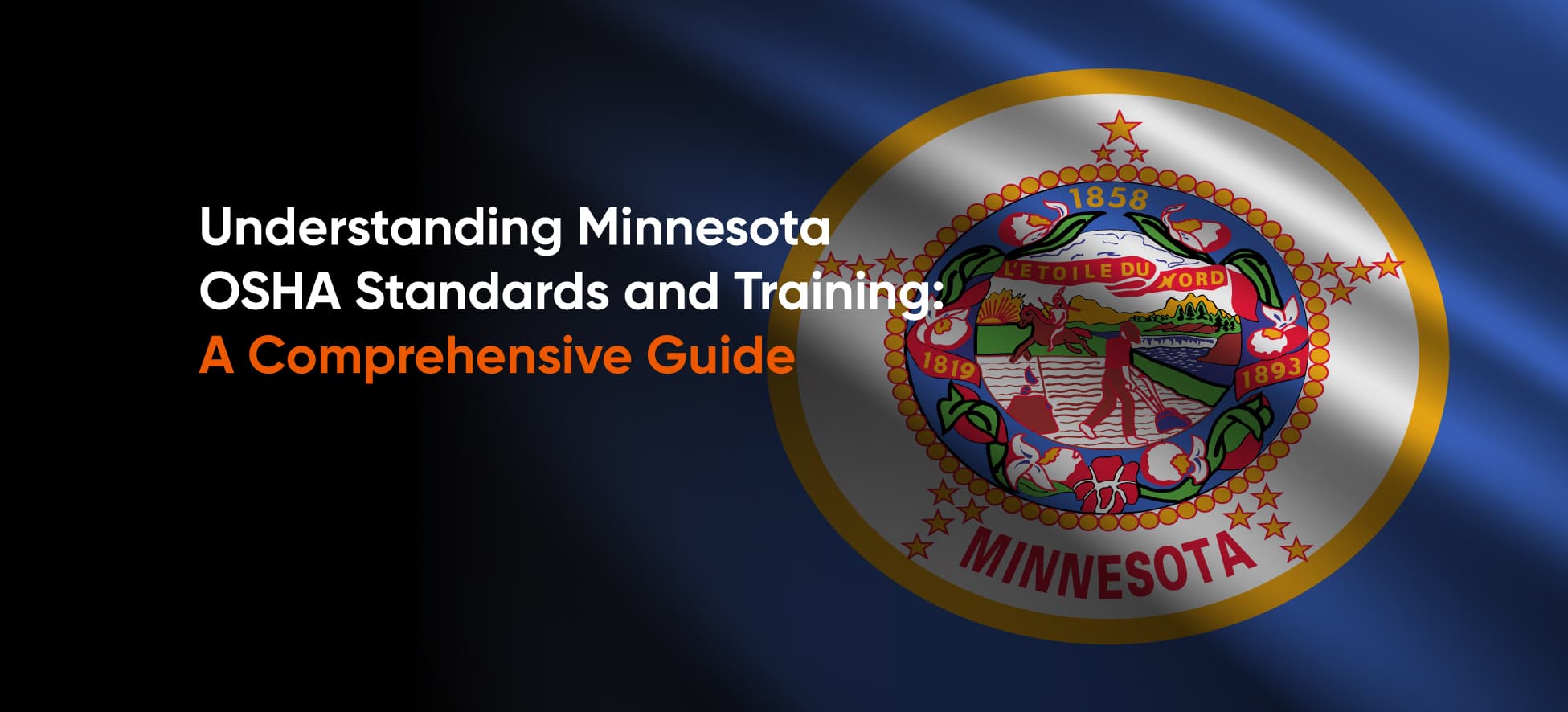The Occupational Safety and Health Administration (OSHA) is a federal agency responsible for establishing and enforcing safety and health regulations in the United States. While the federal OSHA regulations serve as a baseline, some states, including Minnesota, have adopted state-specific OSHA plans. This blog will explore Minnesota OSHA standards and training requirements, helping employers and employees navigate this critical aspect of workplace safety.
Minnesota OSHA Overview:
Minnesota OSHA (MNOSHA) is a division of the Minnesota Department of Labor and Industry (DLI) responsible for enforcing safety and health regulations in the state. The MNOSHA program aims to protect workers from workplace hazards and reduce occupational injuries and illnesses.
Minnesota has a state plan approved by federal OSHA, which means it has adopted safety and health regulations. These regulations must be at least as stringent as federal OSHA standards, and in some cases, they may be more rigorous.
Differences Between Minnesota OSHA and Federal OSHA:
While most MNOSHA standards align with their federal counterparts, there are some differences:
- Minnesota Employee Right-to-Know (ERTK): ERTK is an exceptional state standard requiring employers to provide training and information about hazardous substances, harmful physical agents, and infectious agents in the workplace.
- A Workplace Accident and Injury Reduction (AWAIR) program: Specific to Minnesota, this program requires employers to establish a written safety and health program to identify and control workplace hazards.
- Recordkeeping: Employers with over 20 employees must submit annual injury and illness reports electronically to MNOSHA.
MNOSHA Training Requirements:
Training is an essential component of any successful safety and health program. Therefore, MNOSHA requires employers to provide employees with appropriate training to ensure they know workplace hazards and how to protect themselves. Some essential training requirements include:
- Hazard Communication: Employers must train employees on the hazards of chemicals in the workplace, proper handling and storage, and the use of personal protective equipment (PPE).
- Personal Protective Equipment (PPE): Employees must be trained on the proper use, limitations, and care of PPE.
- Lockout/Tagout: Employees involved in the servicing and maintaining machines must be trained in the lockout/tagout methods to prevent the accidental release of hazardous energy.
- Emergency Action Plan: Employees must be trained on emergency procedures, evacuation routes, and how to respond to various emergencies.
Industry-Specific Training:
Certain industries have specific training requirements under MNOSHA regulations. Some examples include:
- Construction: Employees must be trained in fall protection, scaffold safety, trenching and excavation, and electrical safety.
- Healthcare: Employees must be trained to prevent bloodborne pathogens, ergonomics, and workplace violence.
- Manufacturing: Workers should be trained on machine guarding, confined space entry, and noise exposure.
Recordkeeping and Documentation:
Employers are required to maintain documentation of all training conducted. Training records should include the employee's name, training date, subject matter, and the trainer's name. This information is essential for compliance audits and demonstrates that the employer has met MNOSHA training requirements.
MNOSHA Compliance Assistance and Resources:
The Minnesota Department of Labor and Industry issues various resources to help employers comply with MNOSHA regulations, including:
- Compliance assistance: MNOSHA offers free on-site consultation services to help small employers identify and correct workplace hazards.
- Training materials: The DLI website contains a wealth of information, including training materials, fact sheets, and guides on MNOSHA standards.
- Seminars and workshops: MNOSHA conducts free seminars and workshops on various safety and health topics to educate employers and employees on compliance requirements and best practices.
Reporting and Enforcement:
Employers must report all job-related fatalities within eight hours and work-related inpatient hospitalizations, amputations, or loss of an eye within 24 hours to MNOSHA. They must also keep records of work-related injuries and illnesses and post the OSHA 300A Summary form in a visible area in the workplace.
MNOSHA enforces its standards through inspections, which may trigger complaints, referrals, planned programs, or serious incidents. Inspections typically include reviewing the employer's safety and health program, employee interviews, and workplace walkthrough to identify hazards. Violations can result in citations, fines, and even criminal penalties in severe cases.
Benefits of Compliance:
Complying with MNOSHA standards and training requirements not only keeps employees safe but also benefits employers in several ways:
- Improved employee morale and productivity: A safe workplace can boost employee confidence and productivity, as workers feel more secure and focused on their tasks.
- Reduced costs: Compliance with safety and health regulations can lead to fewer workplace injuries and illnesses, resulting in lower workers' compensation costs and reduced downtime.
- Competitive advantage: A strong safety and health program can enhance a company's reputation, making it more attractive to clients, partners, and potential employees.
Conclusion:
Ultimately, understanding Minnesota OSHA standards and training requirements is essential for businesses operating within the state. Employers must provide a healthy working environment and ensure employees are adequately trained to recognize and prevent workplace hazards. In addition, by staying informed and proactive, employers can foster a culture of safety that benefits both employees and the organization.

